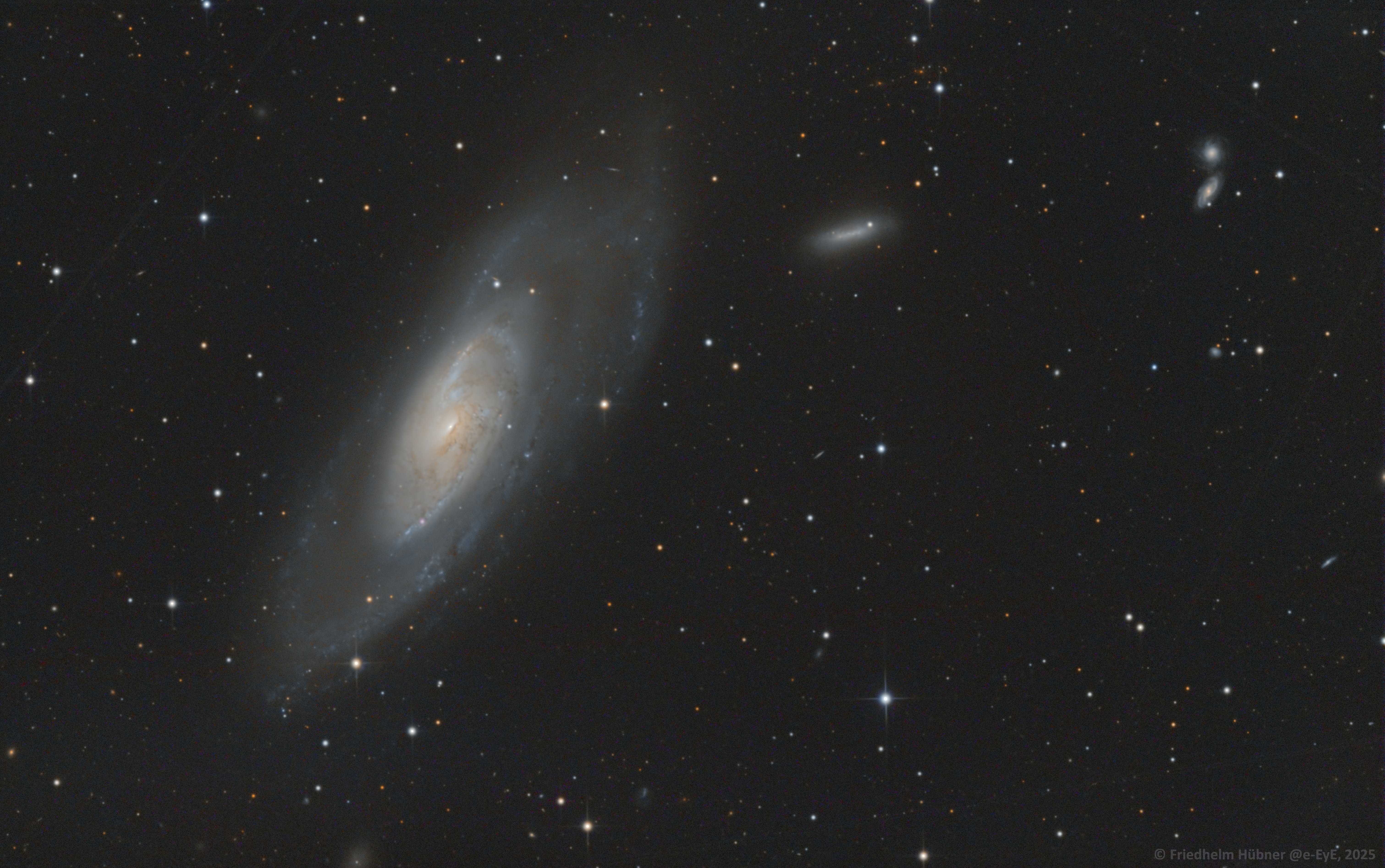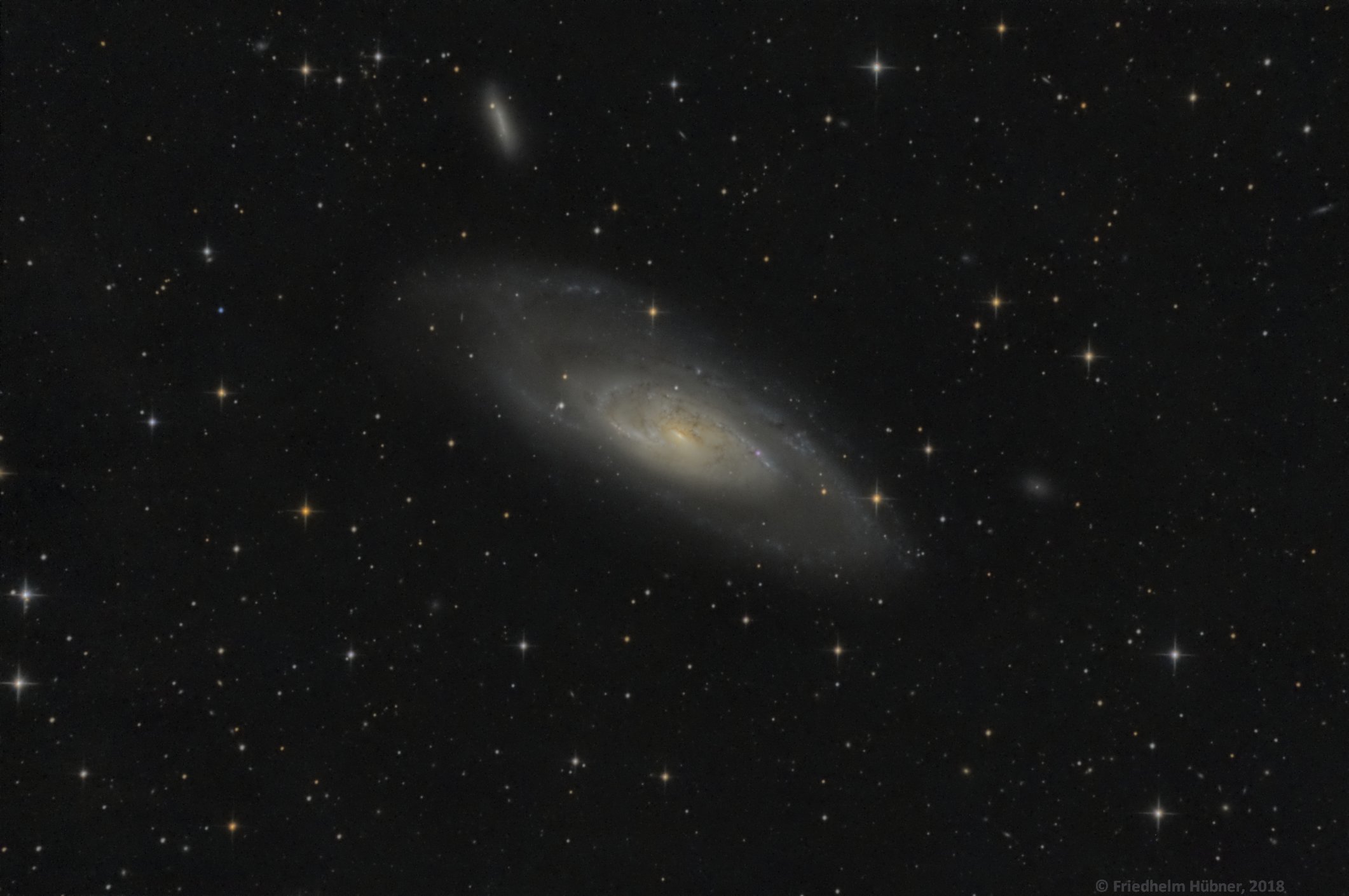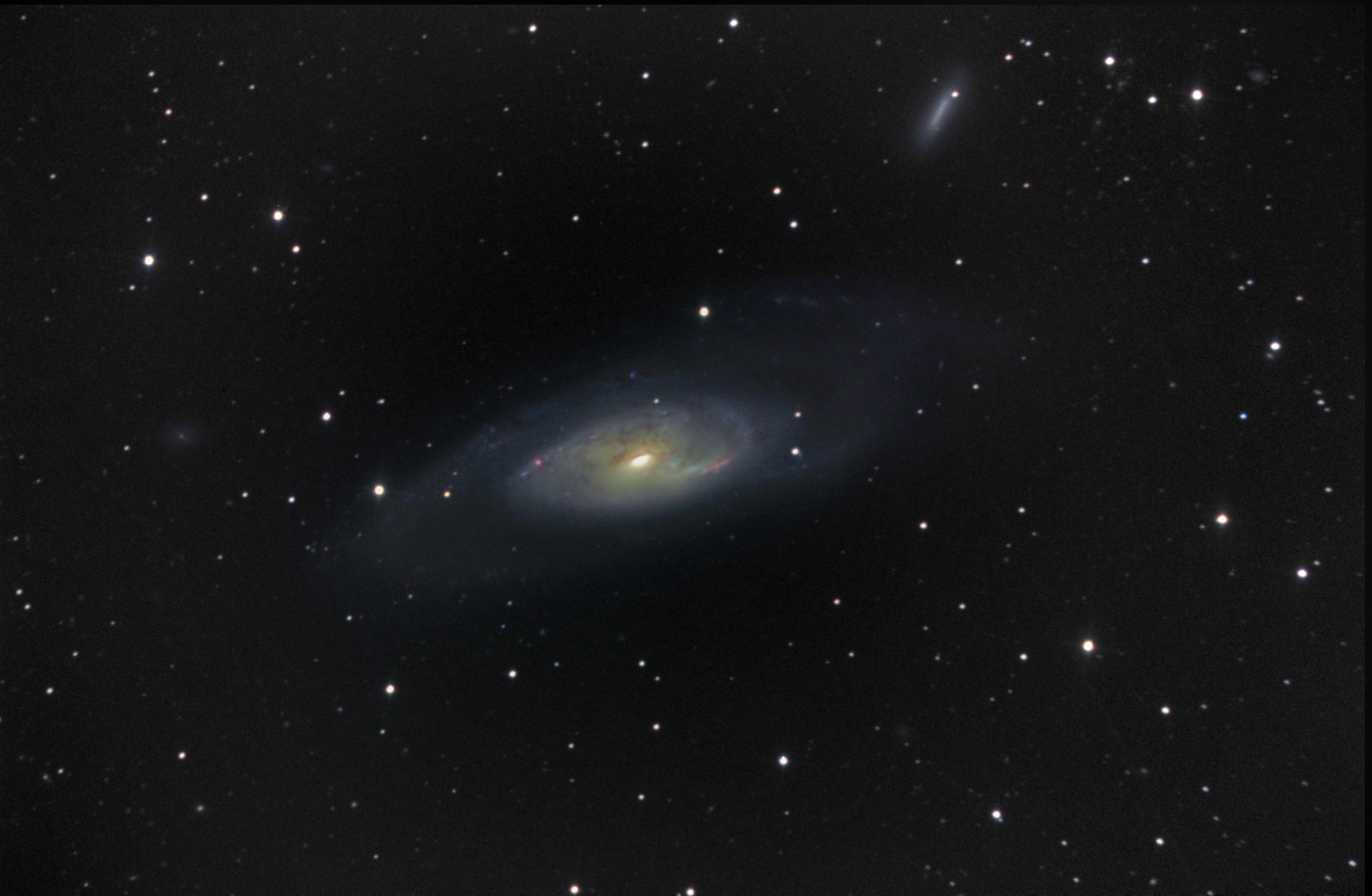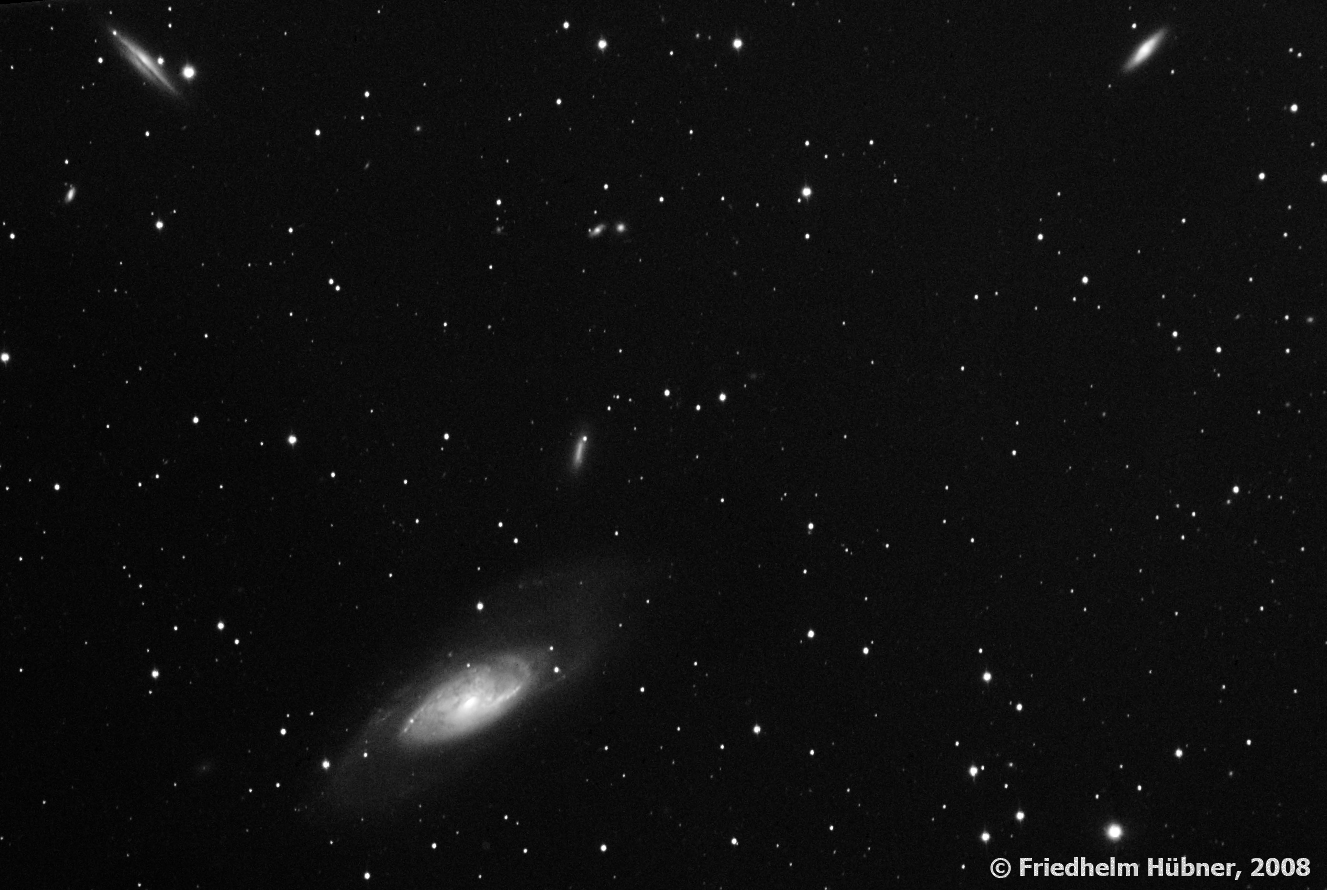|
M106 (CVn)

Click on the image for a larger version
| Date/Site: |
20., 21., 23., 26., 28. Mai 2025, e-EyE |
Exposure/
Filter: |
R: 9 x 180 seconds,
G: 8 x 180 seconds,
B: 8 x 180 seconds,
L: 7 x 300 seconds (-5°C) |
Camera/
Optics/
Instrument: |
ASI 2600MM Pro with Astronomik Type 2c-filter on 400mm f/5 Newton with 2" TS Comacorrector on AP1200 GTO |
|
Data acquired remotely using N.I.N.A.,
Off-Axis-Guiding with ASI120,
Focusing with Microtouch,
Calibration with MaximDL 6, processing in PixInsight 1.8 using BXT and GraXpert |
This galaxy should definitely be imaged at the new home of the „White Elephant“ at the end of the galaxy season.
Here are some older images of this object:
M 106 (CVn), 2018

Click on the image for a larger version
| Date/Site: |
19., 21. April and 2. May 2018. Remote observatory on the AAR club's site in Presberg |
Exposure/
Filter: |
RGB: all 18 x 300 seconds,
L: 26 x 300 seconds (-20°C) |
| Camera: |
QSI 632 with Astronomik Type II-Filters |
Optics/
Instrument: |
250mm f/4 Newton with Baader RCC1 on 10Micron GM1000 HPS |
|
Guiding: Lodestar attached to a 61mm-finder,
focusing with Microtouch and FocusMax,
data acquired remotely using CCD-Commander and MaximDL 6,
calibration: MaximDL 6, processing: PixInsight 1.8 |
With almost three hours of Hα-frames I wanted to enhance the glowing inner hydrogen gasjets near the core of M106. I discarded this data set because I failed to intergrate them properly into the RGB-image.
M106 et al. (CVn), 2010

Click on the image for a larger version
| Date/Site: |
April 1st and 6th, 2010, AAR-observatory in Presberg |
Exposure/
Filter: |
L: 8 x 10 and 10 x 5 minutes, R: 7 x 10 and 3 x 5 minutes,
G: 3 x 10 and 5 x 5 minutes, B: 6 x 10 minutes (-25°C) |
| Camera: |
SBIG ST10XME with CFW9 and SBIG LRGB-filters |
Optics/
Instrument: |
26cm-Newton on Gemini 41 Observatory |
|
Focusing with Robofocus |
|
Darks, flats, deblooming, alignment and stacking: MaximDL 5,
Levels and curves: Photoshop CS3. |
The bright barred spiral galaxy M106 is distorted by several smaller galaxies in it's vicinity. The outer spiral arms are rather smooth and seem to be depleted of dust and gas whereas the core shows quite a lot dusty structures. The northern spiral arm reaches far out into the direction of NGC 4248.
Over two nights exposures totaling 5.5 hours could be bagged.
The first night after several thunderstorms was extraordinarily clear, in the second conditions were mediocre at -2 - +4°C.
For comparison the same galaxy captured two years earlier in b/w with the Sigma 1603 and the TMB:
M106, NGC 4220, NGC 4217 and NGC 4248 (CVn), 2008

Click on the image for a larger version
| Date/Site: |
Februaryy 16., 2008, AAR-observatory in Presberg |
Exposure/
Filter: |
1 x 5 minutes, 5 x 10 minutes (-20°) |
| Camera: |
Sigma 1603 |
Optics/
Instrument: |
4"-TMB on the Gemini 41 Field mount of the AAR |
|
focusing by hand with the aid of MaximDL 4.6 |
|
webcam-guiding with MaximDL through 4"-FH-refractor |
|
Deblooming, darks, alignment and stacking: MaximDL,
levels and curves: Photoshop CS |
|



